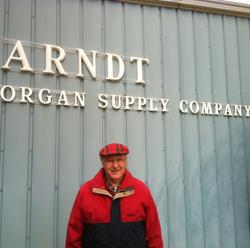
Arndt Organ Supply, Ankeny, Iowa, is celebrating its 50th anniversary in 2016. After serving in the Air National Guard, Bob Arndt joined his father Elmer servicing pipe and electronic organs in the Midwest. In 1966 Bob started the supply business with building Howard seats for theater organs. Later, they made other hard-to-find parts for Wurlitzer and other theater organs. The supply business has expanded to hundreds of parts for pipe organs, along with reed organs and band organs. In addition, the company also builds new organs.
The customer base has expanded to many countries, including Great Britain, Australia, France, New Zealand, Slovenia, Ireland, Sweden, Japan, Germany, and others. Today AOSC concentrates on engraving, tremolos, swell shoes, and custom parts; along with their catalog of products. For further information: 515/964-1274; [email protected]; www.arndtorgansupply.com.

